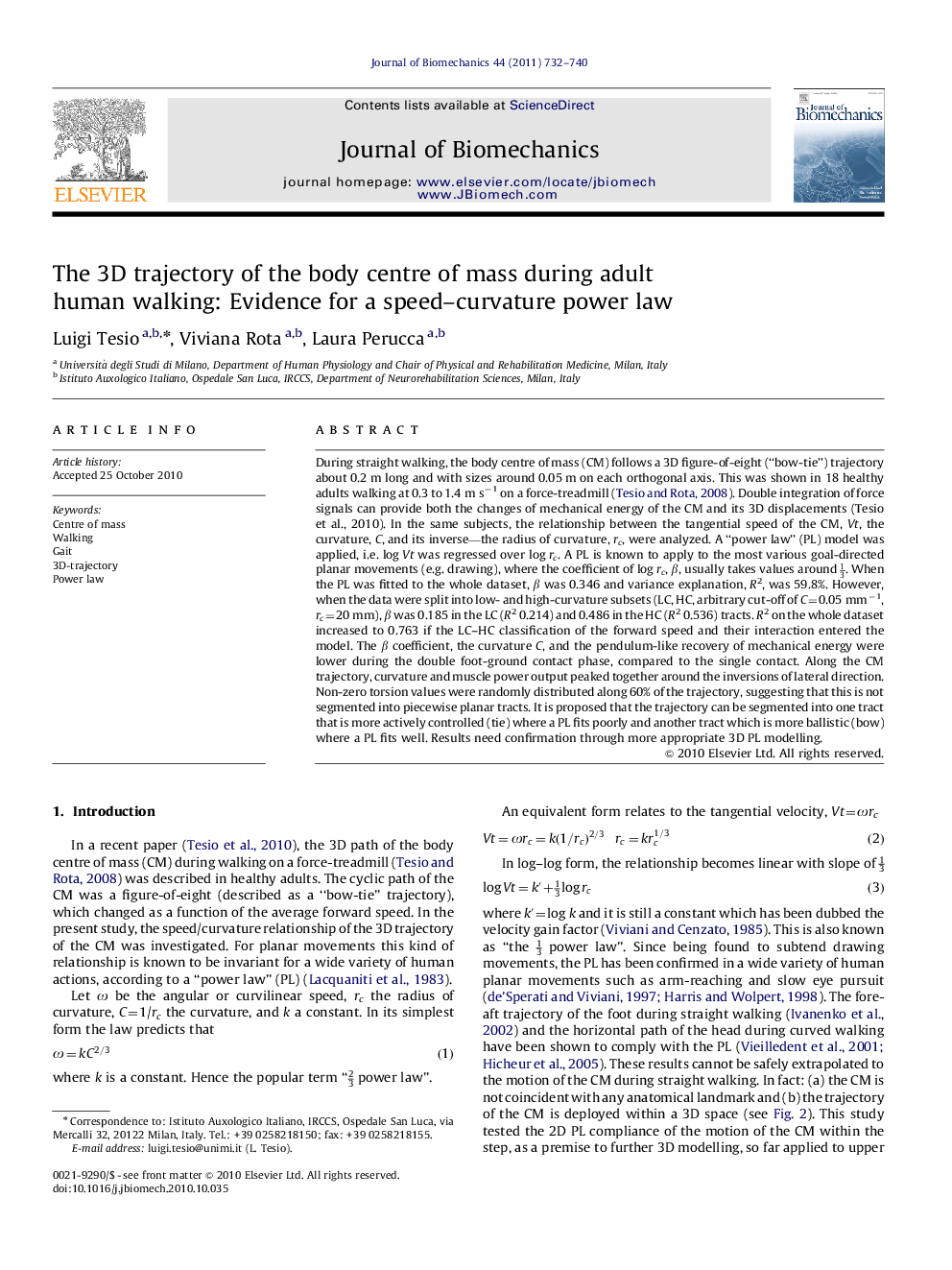| Article ID | Journal | Published Year | Pages | File Type |
|---|---|---|---|---|
| 10433285 | Journal of Biomechanics | 2011 | 9 Pages |
Abstract
During straight walking, the body centre of mass (CM) follows a 3D figure-of-eight (“bow-tie”) trajectory about 0.2 m long and with sizes around 0.05 m on each orthogonal axis. This was shown in 18 healthy adults walking at 0.3 to 1.4 m sâ1 on a force-treadmill (Tesio and Rota, 2008). Double integration of force signals can provide both the changes of mechanical energy of the CM and its 3D displacements (Tesio et al., 2010). In the same subjects, the relationship between the tangential speed of the CM, Vt, the curvature, C, and its inverse-the radius of curvature, rc, were analyzed. A “power law” (PL) model was applied, i.e. log Vt was regressed over log rc. A PL is known to apply to the most various goal-directed planar movements (e.g. drawing), where the coefficient of log rc, β, usually takes values around 13. When the PL was fitted to the whole dataset, β was 0.346 and variance explanation, R2, was 59.8%. However, when the data were split into low- and high-curvature subsets (LC, HC, arbitrary cut-off of C=0.05 mmâ1, rc=20 mm), β was 0.185 in the LC (R2 0.214) and 0.486 in the HC (R2 0.536) tracts. R2 on the whole dataset increased to 0.763 if the LC-HC classification of the forward speed and their interaction entered the model. The β coefficient, the curvature C, and the pendulum-like recovery of mechanical energy were lower during the double foot-ground contact phase, compared to the single contact. Along the CM trajectory, curvature and muscle power output peaked together around the inversions of lateral direction. Non-zero torsion values were randomly distributed along 60% of the trajectory, suggesting that this is not segmented into piecewise planar tracts. It is proposed that the trajectory can be segmented into one tract that is more actively controlled (tie) where a PL fits poorly and another tract which is more ballistic (bow) where a PL fits well. Results need confirmation through more appropriate 3D PL modelling.
Keywords
Related Topics
Physical Sciences and Engineering
Engineering
Biomedical Engineering
Authors
Luigi Tesio, Viviana Rota, Laura Perucca,
